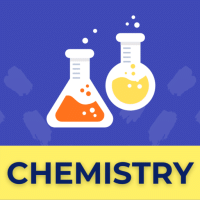Class 11 Exam > Class 11 Questions > The reaction of ethyl magnesium bromide with ...
Start Learning for Free
The reaction of ethyl magnesium bromide with water would give [1999]
- a)Ethane
- b)Ethyl alcohol
- c)Ethyl bromide
- d)Ethyl ether
Correct answer is option 'A'. Can you explain this answer?
Verified Answer
The reaction of ethyl magnesium bromide with water would give [1999]a)...

Most Upvoted Answer
The reaction of ethyl magnesium bromide with water would give [1999]a)...
Reaction Overview
The reaction of ethyl magnesium bromide, which is a Grignard reagent, with water is an important reaction in organic chemistry. Grignard reagents are highly reactive organomagnesium compounds that can react with various electrophiles.
Reaction Mechanism
- Ethyl magnesium bromide (C2H5MgBr) consists of a nucleophilic ethyl group (C2H5-) and a magnesium bromide component.
- When it comes into contact with water (H2O), the nucleophilic ethyl group attacks the electrophilic hydrogen in water.
Products of the Reaction
- The primary product formed in this reaction is ethane (C2H6).
- The overall reaction can be summarized as:
- C2H5MgBr + H2O → C2H6 + Mg(OH)Br
- Here, the ethyl group (C2H5-) from the Grignard reagent combines with a hydrogen atom from water to produce ethane.
Why Ethyl Alcohol is Incorrect
- While ethyl alcohol (ethanol) is formed in some Grignard reactions with carbonyl compounds, in this case, the direct reaction with water does not lead to the formation of alcohol.
- Instead, the high reactivity of the Grignard reagent with water leads to the formation of ethane and magnesium hydroxide bromide.
Conclusion
- Therefore, the correct answer to the question regarding the product of the reaction between ethyl magnesium bromide and water is option A: Ethane.
Understanding this reaction highlights the reactivity of Grignard reagents and their role in organic synthesis.
The reaction of ethyl magnesium bromide, which is a Grignard reagent, with water is an important reaction in organic chemistry. Grignard reagents are highly reactive organomagnesium compounds that can react with various electrophiles.
Reaction Mechanism
- Ethyl magnesium bromide (C2H5MgBr) consists of a nucleophilic ethyl group (C2H5-) and a magnesium bromide component.
- When it comes into contact with water (H2O), the nucleophilic ethyl group attacks the electrophilic hydrogen in water.
Products of the Reaction
- The primary product formed in this reaction is ethane (C2H6).
- The overall reaction can be summarized as:
- C2H5MgBr + H2O → C2H6 + Mg(OH)Br
- Here, the ethyl group (C2H5-) from the Grignard reagent combines with a hydrogen atom from water to produce ethane.
Why Ethyl Alcohol is Incorrect
- While ethyl alcohol (ethanol) is formed in some Grignard reactions with carbonyl compounds, in this case, the direct reaction with water does not lead to the formation of alcohol.
- Instead, the high reactivity of the Grignard reagent with water leads to the formation of ethane and magnesium hydroxide bromide.
Conclusion
- Therefore, the correct answer to the question regarding the product of the reaction between ethyl magnesium bromide and water is option A: Ethane.
Understanding this reaction highlights the reactivity of Grignard reagents and their role in organic synthesis.

|
Explore Courses for Class 11 exam
|

|
Question Description
The reaction of ethyl magnesium bromide with water would give [1999]a)Ethaneb)Ethyl alcoholc)Ethyl bromided)Ethyl etherCorrect answer is option 'A'. Can you explain this answer? for Class 11 2025 is part of Class 11 preparation. The Question and answers have been prepared according to the Class 11 exam syllabus. Information about The reaction of ethyl magnesium bromide with water would give [1999]a)Ethaneb)Ethyl alcoholc)Ethyl bromided)Ethyl etherCorrect answer is option 'A'. Can you explain this answer? covers all topics & solutions for Class 11 2025 Exam. Find important definitions, questions, meanings, examples, exercises and tests below for The reaction of ethyl magnesium bromide with water would give [1999]a)Ethaneb)Ethyl alcoholc)Ethyl bromided)Ethyl etherCorrect answer is option 'A'. Can you explain this answer?.
The reaction of ethyl magnesium bromide with water would give [1999]a)Ethaneb)Ethyl alcoholc)Ethyl bromided)Ethyl etherCorrect answer is option 'A'. Can you explain this answer? for Class 11 2025 is part of Class 11 preparation. The Question and answers have been prepared according to the Class 11 exam syllabus. Information about The reaction of ethyl magnesium bromide with water would give [1999]a)Ethaneb)Ethyl alcoholc)Ethyl bromided)Ethyl etherCorrect answer is option 'A'. Can you explain this answer? covers all topics & solutions for Class 11 2025 Exam. Find important definitions, questions, meanings, examples, exercises and tests below for The reaction of ethyl magnesium bromide with water would give [1999]a)Ethaneb)Ethyl alcoholc)Ethyl bromided)Ethyl etherCorrect answer is option 'A'. Can you explain this answer?.
Solutions for The reaction of ethyl magnesium bromide with water would give [1999]a)Ethaneb)Ethyl alcoholc)Ethyl bromided)Ethyl etherCorrect answer is option 'A'. Can you explain this answer? in English & in Hindi are available as part of our courses for Class 11.
Download more important topics, notes, lectures and mock test series for Class 11 Exam by signing up for free.
Here you can find the meaning of The reaction of ethyl magnesium bromide with water would give [1999]a)Ethaneb)Ethyl alcoholc)Ethyl bromided)Ethyl etherCorrect answer is option 'A'. Can you explain this answer? defined & explained in the simplest way possible. Besides giving the explanation of
The reaction of ethyl magnesium bromide with water would give [1999]a)Ethaneb)Ethyl alcoholc)Ethyl bromided)Ethyl etherCorrect answer is option 'A'. Can you explain this answer?, a detailed solution for The reaction of ethyl magnesium bromide with water would give [1999]a)Ethaneb)Ethyl alcoholc)Ethyl bromided)Ethyl etherCorrect answer is option 'A'. Can you explain this answer? has been provided alongside types of The reaction of ethyl magnesium bromide with water would give [1999]a)Ethaneb)Ethyl alcoholc)Ethyl bromided)Ethyl etherCorrect answer is option 'A'. Can you explain this answer? theory, EduRev gives you an
ample number of questions to practice The reaction of ethyl magnesium bromide with water would give [1999]a)Ethaneb)Ethyl alcoholc)Ethyl bromided)Ethyl etherCorrect answer is option 'A'. Can you explain this answer? tests, examples and also practice Class 11 tests.

|
Explore Courses for Class 11 exam
|

|
Signup for Free!
Signup to see your scores go up within 7 days! Learn & Practice with 1000+ FREE Notes, Videos & Tests.


















